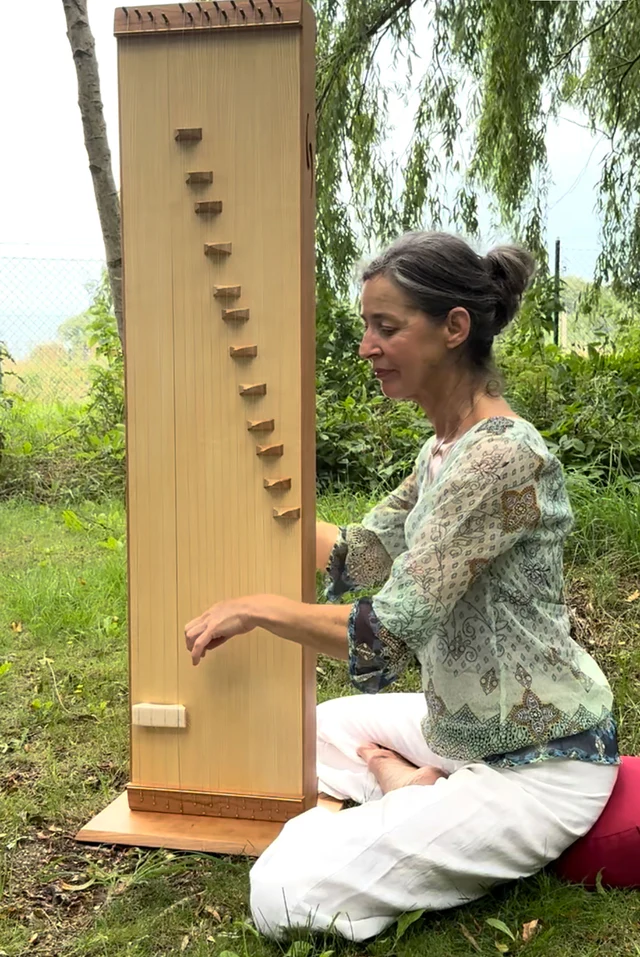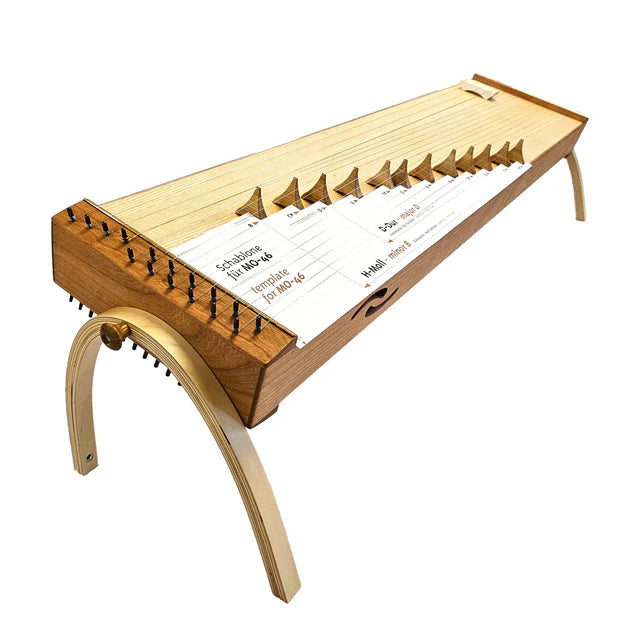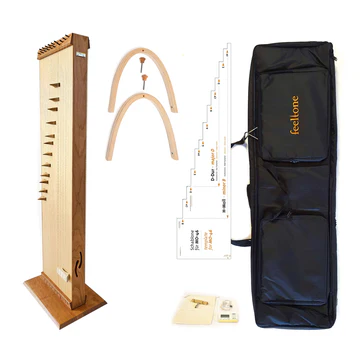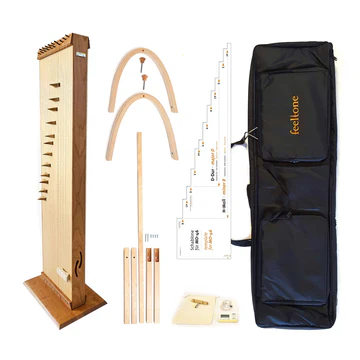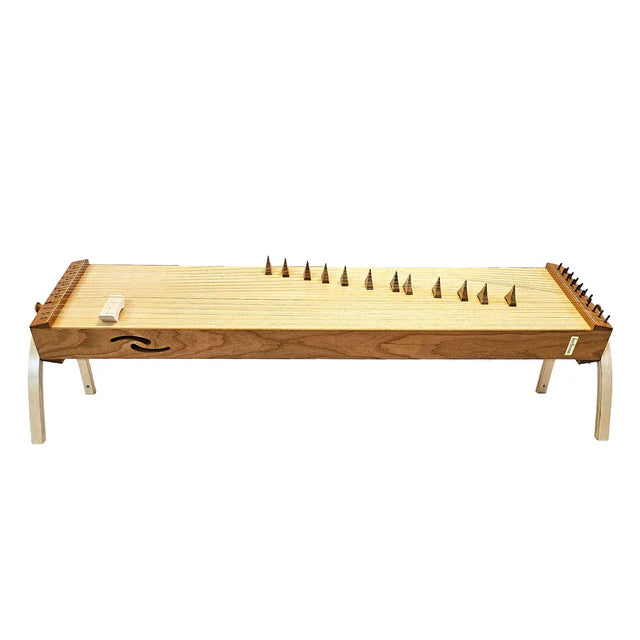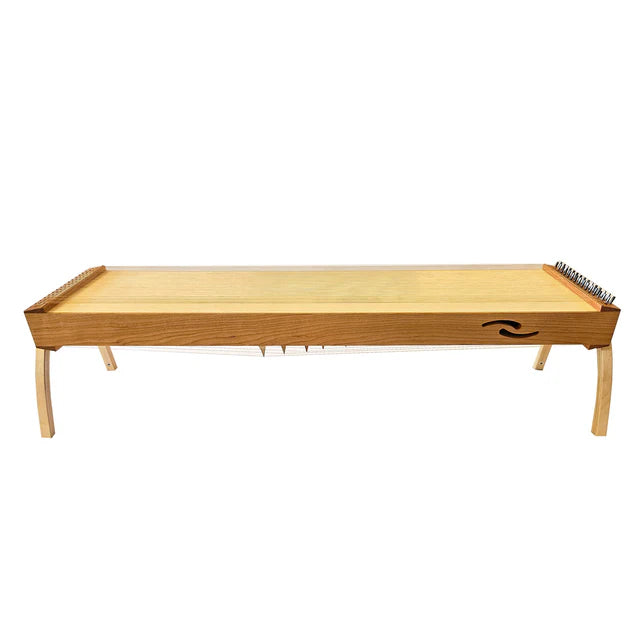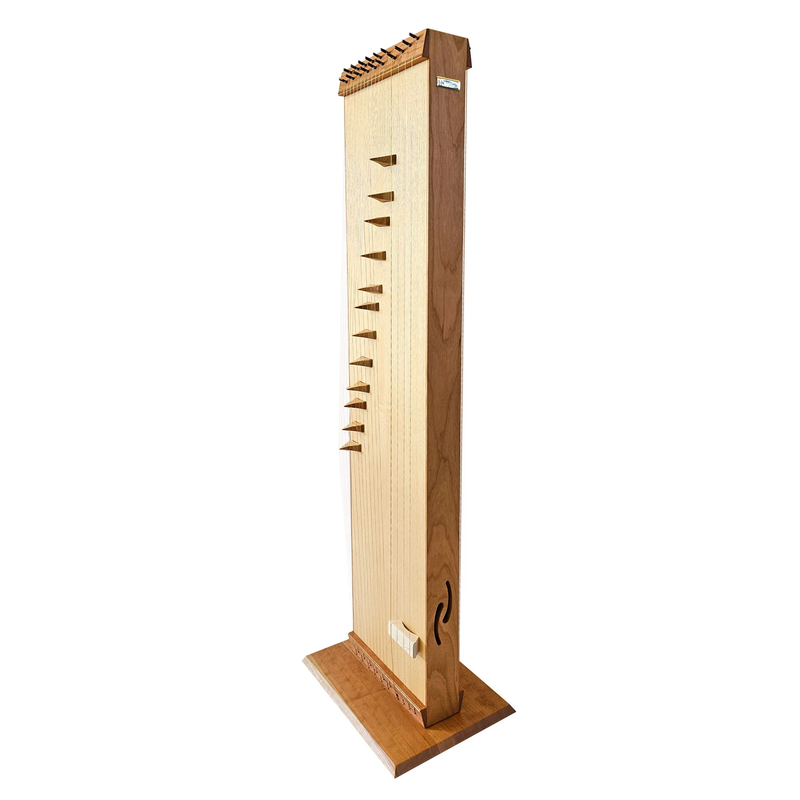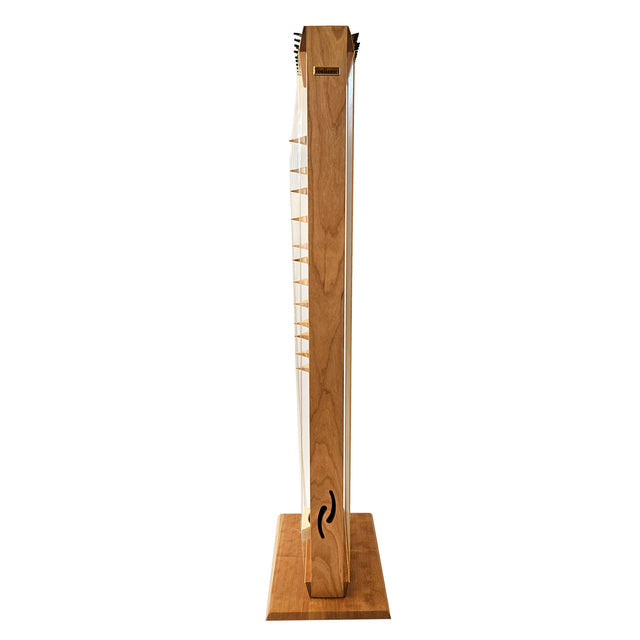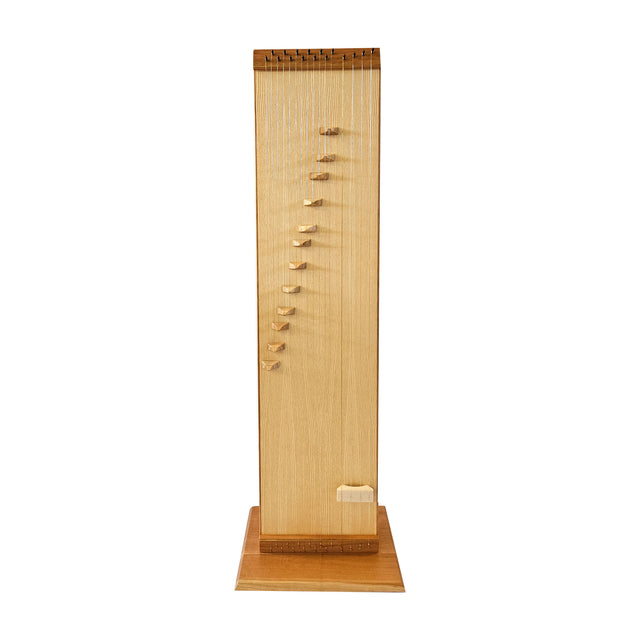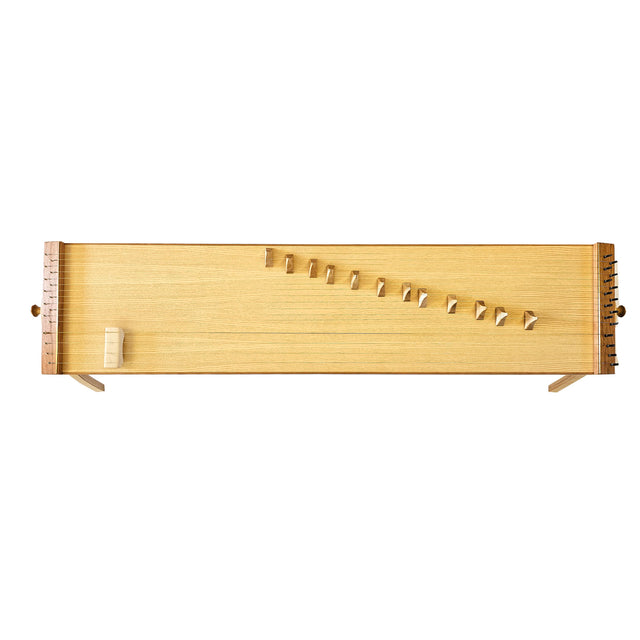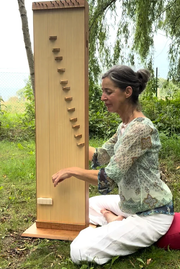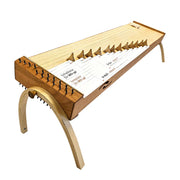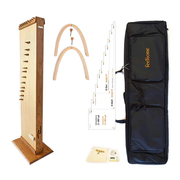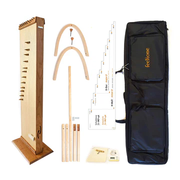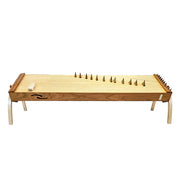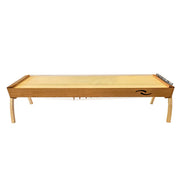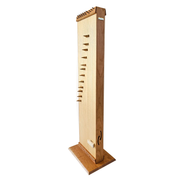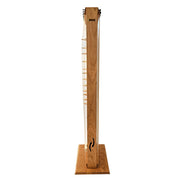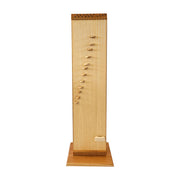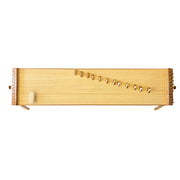KOTAMO Master Monochord
Technical data:
- Monochord with 20 plain overtone strings in D
- 10 wound bass strings in D
- 4-string tambura in D, d, d, a
- 12-string koto with harp-like sound (fundamental d)
- Wood: frame - cherry, soundboard - ash
- Size: 129 x 30 x 11 cm
- Accessories: Incl. feet, u-stand, tuning key, tuner, spare strings, 12 koto tabs, tuning template and tambura bridge
- Biologically treated with hard wax oil
- Made in Germany
- D3 - D2 (Tanbura 5th: A2)
Add Ons
- Matching Bag
- Mallets
- Extension for the Legs so you can play sitting in a chair
The KO-TA-MO (MO-46GK) from feeltone is strung in D tuning,with the option of tuning the strings down a semitone to the magical C#. It isstrung with 20 blank overtone strings, 10 wound bass strings, 12 koto stringsand 4 tambura strings. This instrument, which is more dedicated to tonal music,comprises three traditional stringed instruments: the Japanese koto, the Indiantambura and the Mongolian monochord. It is wonderfully versatile and willdelight any string virtuoso.
Thanks to the new design, the single bridges can bepositioned for Koto, GuCheng or guitar players using the new template. In theclassic Japanese/Chinese positioning, the plucking hand is on the right. Thetemplate is placed against the peg block and the single bridges are positionedso that the highest note is towards the body. The left hand presses down thestring for plucked notes or plays together with the other hand to the right ofthe single bridges. This set-up is recommended for beginners and newcomers tothe instrument. For guitarists who have more virtuosity in their left hand, thetemplate can be placed on the nail block. This positions the single bridges sothat the lowest note is towards the body. The stringing of the koto is also chosen in D, here in D-diatonic, whereby two notes are tuned below the D scale and two above the octave. This means that the scale starts in B minor, which is the minor parallel to the D major scale. As a result, the KOTAMO comes with two scales to play. The single bridges can easily be moved to the right or left asrequired in order to play other scales. This requires some practice, but is something that traditional GuCheng or Koto players do all the time while playing.
The tambura (D, d, d, a) is next tot he koto. The tamburastrings are plucked, just like the koto. The strings of the tambura are pluckedupwards, away from the instrument, to emphasise the traditional buzzing effect.By pushing the jiva (threads) underneath, the strings begin to buzz - thetambura comes to life. It is the traditional accompanying instrument inclassical Indian orchestras, which forms the basis for the virtuosos with its sound.
On the other side is the 30-string monochord - with 20 blankovertone strings running down the centre and 5 bass strings at each edge,allowing the breathtaking and endless sound carpet to be played with a gentle stroking.
A unique instrument with an enormous richness of sound andperfect reverberation. Versatile and suitable for a combination of meditationmusic, spherical sounds and harp-like, Asian melodies. A completely new levelof experience for guitarists and an easy approach from intuitive, meditativesound to tonal, virtuoso, expressive or playful melodic dreams.

